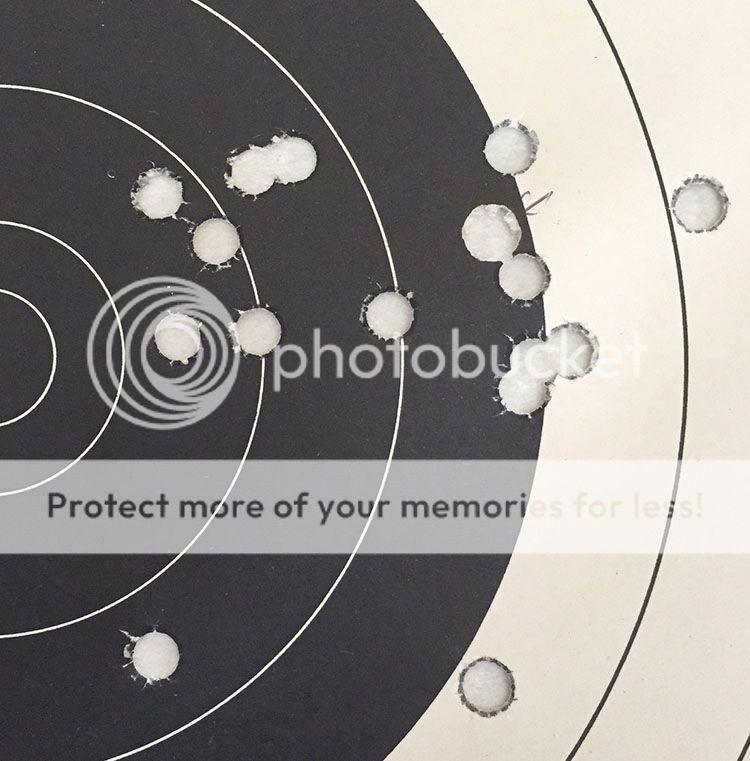Did some shooting today with the 44 mag Super Redhawk. I put my 2X scope on it to make sighting easier.
Load was a 44/444 305HP by MP Moulds. I cast them from range scrap and water dropped. Lube was God knows what, it was in the Star so I used it, it was something I made last year. Powder was 17 gr of WC820 lit by a CCI 350 primer. Brass is stuff I have had for as long as I have had the revolver and that is approaching 20 years.
At 100 yards off the bench I started by firing 5 rounds of a different load with an old Lee GB Keith type bullet and whatever the load was. I only had 15 of the "good" stuff so I wanted to be sure I was on paper to start.

The hole with an arrow to it is one of the 5 I used to verify I was on paper. I dropped a couple low but the group of 13 is about 3 inches wide and maybe 1.5 inches tall. I was tickled pink with this.
Now to get some new brass, H110, and some Fed primers and see how much smaller I can get it.
Load was a 44/444 305HP by MP Moulds. I cast them from range scrap and water dropped. Lube was God knows what, it was in the Star so I used it, it was something I made last year. Powder was 17 gr of WC820 lit by a CCI 350 primer. Brass is stuff I have had for as long as I have had the revolver and that is approaching 20 years.
At 100 yards off the bench I started by firing 5 rounds of a different load with an old Lee GB Keith type bullet and whatever the load was. I only had 15 of the "good" stuff so I wanted to be sure I was on paper to start.

The hole with an arrow to it is one of the 5 I used to verify I was on paper. I dropped a couple low but the group of 13 is about 3 inches wide and maybe 1.5 inches tall. I was tickled pink with this.
Now to get some new brass, H110, and some Fed primers and see how much smaller I can get it.
